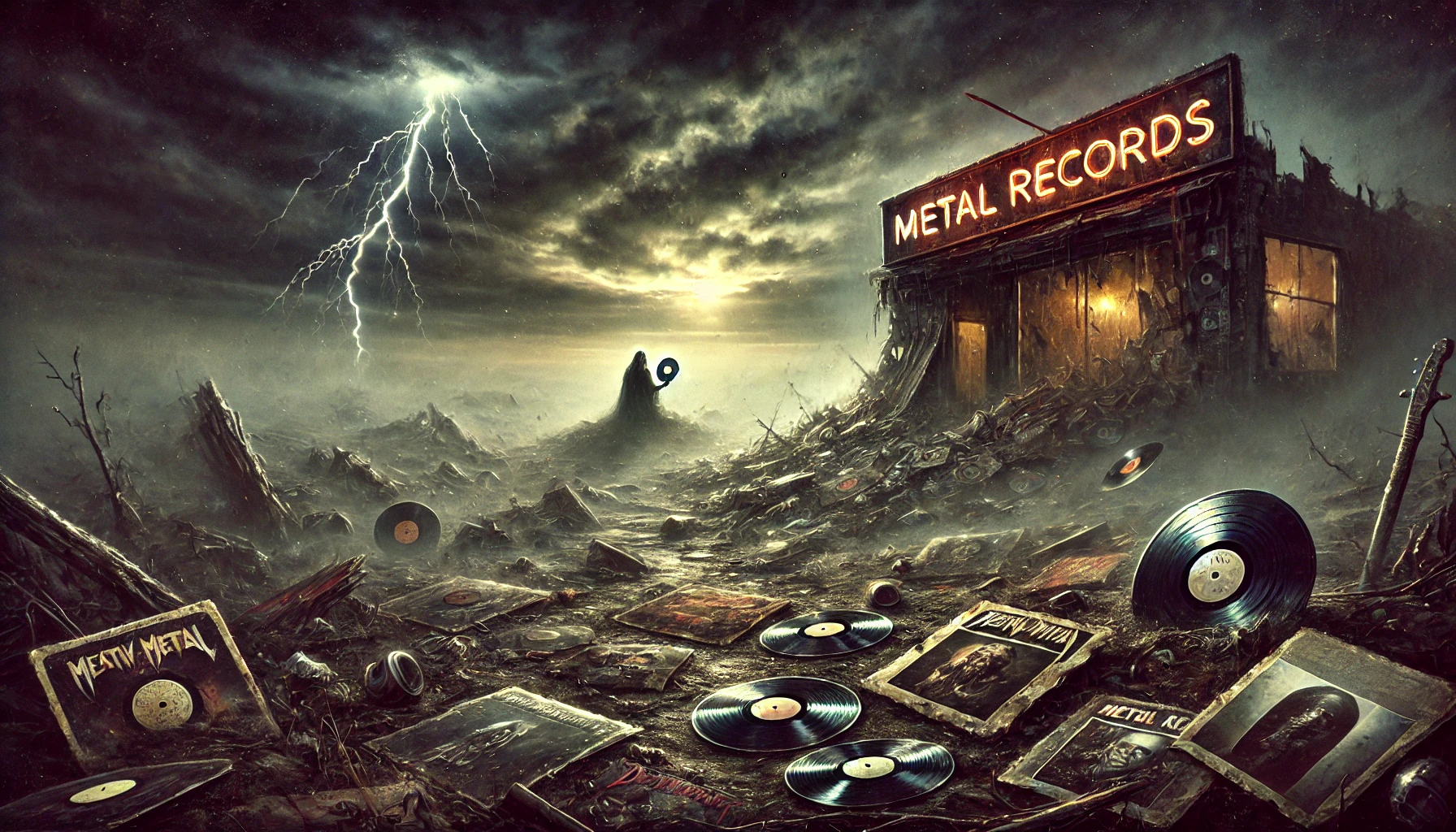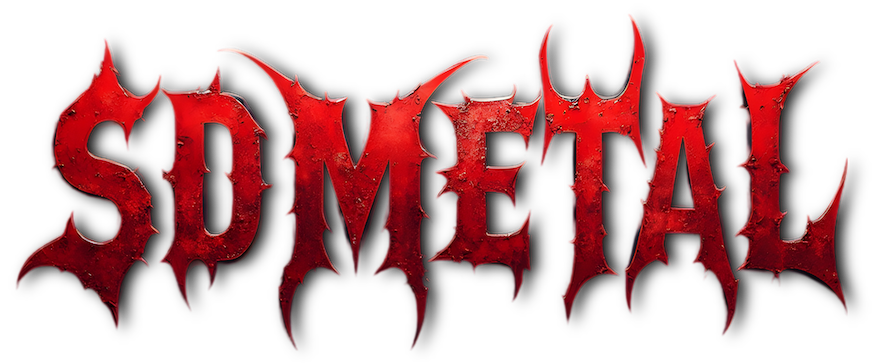
In the digital age, the visceral, tangible experience of heavy metal music is at risk of fading away. With the rise of streaming services, physical music formats like CDs and vinyl records are becoming relics, and for metal fans, this loss hits particularly hard. Metal has always been more than just music—it’s a culture, a statement, and a community. The decline of physical music & media is not just the end of a format; it’s a blow to the entire metal experience. This article explores why metal fans, artists, and collectors should fight to keep physical media alive and what’s lost when we trade physical albums for playlists.
Article Content
The Metal Album: An Immersive Experience
For metalheads, albums are more than collections of songs; they’re journeys. The ritual of opening a new metal album, examining the art, reading the liner notes, and listening to it from start to finish is immersive. Whether it’s the brutal landscapes on Slayer’s Reign in Blood or the dark mythology on Iron Maiden’s The Number of the Beast, each album is a story, and each track builds on the last. Streaming, with its endless playlists and shuffle options, takes away from this sense of journey and purpose. When we stream, we might catch a track or two, but we lose the album’s coherence, its intended sequence, and its full impact.
Physical formats invite us to slow down and engage with metal music in its raw, intended form. Each album is a complete piece of art, an invitation to enter a world that the band created. The ritual of inserting a CD, dropping a needle, or pressing “play” on a tape commands attention, allowing listeners to immerse themselves fully. Streaming lacks that ritual—it’s convenient, yes, but it reduces the experience to background noise rather than the intense, focused experience that metal deserves.
Album Art: The Visual Power of Metal
Metal album art is iconic, a visual manifesto that mirrors the aggression, mystery, and power of the music within. Think of Metallica’s Master of Puppets, with its eerie graveyard of crosses, or Cannibal Corpse’s infamous and gory covers that have been censored worldwide. These covers are not merely decorative; they are extensions of the band’s vision and a signal of the album’s thematic depths.
Physical formats, especially vinyl, provide the space for album art to shine. When we lose physical albums, we also lose the impact of these visual statements. A tiny thumbnail on a streaming platform doesn’t do justice to the intricate detail, symbolism, and raw intensity of metal album art. In the 1980s and 90s, album covers were as much a part of the identity of metal bands as their music was. They adorned bedroom walls, became iconic tattoos, and even influenced fashion. Digital covers, reduced to a few pixels on a screen, simply cannot carry the same weight or cultural significance.
Collecting Metal Albums: A Badge of Honor
In metal culture, collecting albums is more than a hobby; it’s a way to claim allegiance to the genre. To own a physical album is to possess a piece of the band, to feel connected to its history and legacy. Metalheads take pride in their collections, and for good reason. A shelf filled with vinyl records, cassette tapes, and CDs is a testament to years of discovery, dedication, and respect for the art form. Collecting is a deeply personal experience—it’s a journey through one’s own evolution as a fan, and it’s an archive of musical moments that shaped their lives.
Owning physical metal albums is also a form of preservation. While digital files can disappear with the collapse of a platform or the corruption of a hard drive, a vinyl record or CD can endure for decades. These physical copies serve as archives, ensuring that future generations can discover metal in its most authentic form. For metal fans, collecting is a way to preserve the genre’s history and pass it down—a practice that streaming services simply can’t replace.
Supporting the Bands: More Than a Click
Metal has always been a genre driven by passion rather than profit. Unlike pop artists, most metal bands earn little from their music, relying heavily on album sales and touring. Streaming, with its notoriously low royalties, doesn’t provide a sustainable income for many metal bands, particularly the smaller, independent acts that form the backbone of the genre. When we buy physical albums, especially direct from the band, we’re supporting the artists who pour their heart, soul, and sweat into every release.
Buying an album is a statement of support; it tells the band, “Your music matters.” The purchase of a physical album is an act of loyalty that streaming simply cannot replicate. Metal fans have always been known for their fierce dedication to their favorite bands, and owning physical media is a powerful way to show that support.
Metal’s Anti-Establishment Roots: A Fight Against the Disposable
Metal has always thrived on rebellion, nonconformity, and pushing against mainstream trends. It’s no surprise, then, that metal fans and artists have embraced the revival of vinyl records and cassette tapes. Streaming might be convenient, but it’s also disposable, reducing music to a fleeting experience rather than a meaningful one. Metal, with its anti-establishment ethos, calls for something more permanent, something fans can hold onto and cherish.
Physical albums stand in opposition to the disposability of modern digital culture. They’re tangible symbols of the permanence and strength that metal represents. When you own an album, it’s yours—you don’t need a subscription or internet connection to access it. You don’t need to worry about it disappearing from a platform’s library. In a world that increasingly promotes convenience over connection, physical media stands as a bold act of defiance.
The Case for Physical Media in Metal
As the music world moves further into the digital realm, preserving physical media becomes an act of cultural preservation for metal. Physical albums provide a fuller, more immersive way to experience music. They offer a multisensory engagement with the art form, incorporating sound, sight, and touch. They capture the essence of the band’s vision and allow listeners to engage with metal on a deeper, more meaningful level.
Moreover, physical albums serve as a cultural record. When you flip through a collection of vinyl or CDs, you’re looking at decades of history, at an entire genre’s journey from underground obscurity to global influence. Physical media is a testament to metal’s resilience, its ability to thrive even as trends come and go. Preserving physical albums is about honoring metal’s roots, its artists, and the fans who have kept the genre alive through the years.
Conclusion
The decline of physical music formats is more than just a technological shift; it’s a loss of something vital to the metal community. Metal isn’t just about listening; it’s about feeling, experiencing, and connecting. Physical albums embody that experience, offering something digital media simply cannot replicate. By preserving and valuing physical formats, we ensure that metal music remains a tangible, lasting art form, one that can be held, shared, and cherished across generations. In a world that moves ever faster, metal reminds us of the power of slowing down, of committing to the music, and of embracing a deeper connection.
As long as there are metal fans who value authenticity, there will be a place for physical music in the genre. And perhaps, by holding onto these tangible pieces of metal history, we keep alive not only the music but the spirit of rebellion that defines it.
